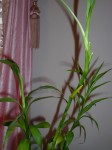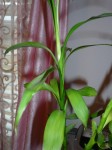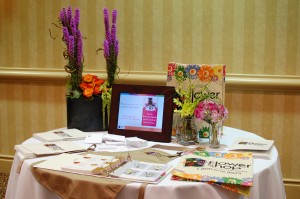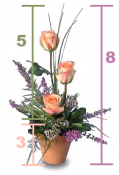There’s an old Arkansas saying, “If you don’t like the weather, stick around a while and it will change.” Living in Arkansas my entire life, I can honestly say that is 100% true. March in the South has been cold, rainy, and is just plain awful. Last week it was 70° then dropped to 32° the very next day. Our plant life is about two weeks behind schedule and are just now turning green. I am so ready to start planting I can barely stand it!
To bite this planting bug, I signed up for a class at our unique state park — The Ozark Folk Center. The medicinal and edible herb field trip weekend was an outstanding opportunity to learn more about the herbs and plants I want to work with in my summer herb garden.
We don’t really think about them anymore, but herbs were once a crucial part of early American civilization. People grew herbs to dye their clothes, wash their hair, brush their teeth, flavor their foods, as medicine, as insecticides, in cooking, in cleaning — you couldn’t live without them. Now, all of these things are available to us through our local grocery store. Herbalism is a dying part of our heritage and I am so glad the Folk Center, and other such places, make great strides to preserve our rich history.
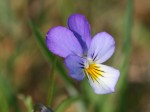 Friday, we went out on buses to the banks of several Arkansas Rivers — White River, Red River, and Buffalo River. Our guides identified almost every bit of green we could find. We saw elderberry, dock, pepper grass, false nettle, chickweed, cress, wild mustard, wild garlic, and so much more. You’d be surprised how much you can eat in your lawn. (Though I must admit, the Johnny Jump-up flowers are delicious and I’ve been eating them out of my lawn since I got home. My friends think I’m nuts!)
Friday, we went out on buses to the banks of several Arkansas Rivers — White River, Red River, and Buffalo River. Our guides identified almost every bit of green we could find. We saw elderberry, dock, pepper grass, false nettle, chickweed, cress, wild mustard, wild garlic, and so much more. You’d be surprised how much you can eat in your lawn. (Though I must admit, the Johnny Jump-up flowers are delicious and I’ve been eating them out of my lawn since I got home. My friends think I’m nuts!)
On Saturday we got to eat our findings in a delicious gourmet meal prepared by author Susan Belsinger. We enjoyed a salad of wild and domestic greens with a homemade herbal buttermilk dressing and a delicious been soup. For bread we had cheddar tarragon cornbread as well as an herb bread knot with lemon verbena honey. We topped it all off with a sparkling herb soda (best drink ever!) and had a delicious, gourmet meal with most ingredients growing wild in the yard.
Here are a few interesting and easy thing YOU can do with herbs today:
- Add a few herbs to your honey jar. We had a lemon verbena honey that was delicious!
- Add a few vanilla beans to your rice vinegar bottle. This gives it just a hint of added flavor that will keep your dinner guests guessing.
- Eat your wild onions. These are easily identified, yet most people think they can’t eat them. The rule is: If it smells like an onion, it is an onion. And you can enjoy these until they are big enough to become stiff, then they are still edible, just not as tender.
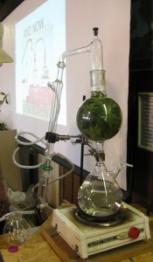 The last part of the seminar was how to distill herbs for their natural essential oil and hydrosol (plant’s water). The glass still (pictured right) holds 1 liter of basil. The glass on the hotplate is boiling and pushing steam through the basil. The basil’s water and oils turn to steam and condense in the glass tubing. Once the oil and water separate, they cannot become one again so they collect at the bottom of the tube. The quantity of oil is significantly less than that of the water and is extremely concentrated. Hydrosol is the plant or flower’s water. It is milder than the essential oil and has unlimited possibilities. The smell of the hydrosol is very strong, making it very valuable for candles, room sprays and other fragrant products. It is also much more gentle than essential oils which makes it great for cosmetics, pet products and bath products.
The last part of the seminar was how to distill herbs for their natural essential oil and hydrosol (plant’s water). The glass still (pictured right) holds 1 liter of basil. The glass on the hotplate is boiling and pushing steam through the basil. The basil’s water and oils turn to steam and condense in the glass tubing. Once the oil and water separate, they cannot become one again so they collect at the bottom of the tube. The quantity of oil is significantly less than that of the water and is extremely concentrated. Hydrosol is the plant or flower’s water. It is milder than the essential oil and has unlimited possibilities. The smell of the hydrosol is very strong, making it very valuable for candles, room sprays and other fragrant products. It is also much more gentle than essential oils which makes it great for cosmetics, pet products and bath products.
I had a fascinating time and learned so much on my mini-vacation, next month’s gardening blog should be very exciting! I will be planting all sorts of wonderful and delicious herbs and share the entire process with you! Be sure to subscribe!


 Find Your
Find Your 



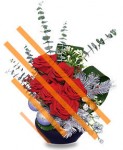
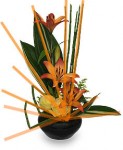

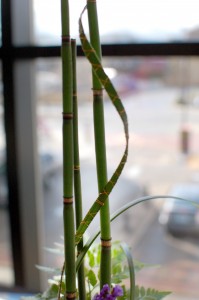
 Simply type your city or surrounding cities into the “SEARCH” box at the top of Facebook. This will give you a list of top 8 profiles, but at the bottom of the list click “See all results from CITY” and it will show you everyone on Facebook close to your location. These are real people from YOUR community. Use your best judgment to friend those who match your customer demographic and will be interested in what you have to say.
Simply type your city or surrounding cities into the “SEARCH” box at the top of Facebook. This will give you a list of top 8 profiles, but at the bottom of the list click “See all results from CITY” and it will show you everyone on Facebook close to your location. These are real people from YOUR community. Use your best judgment to friend those who match your customer demographic and will be interested in what you have to say.